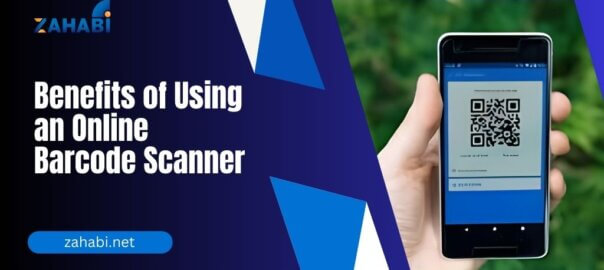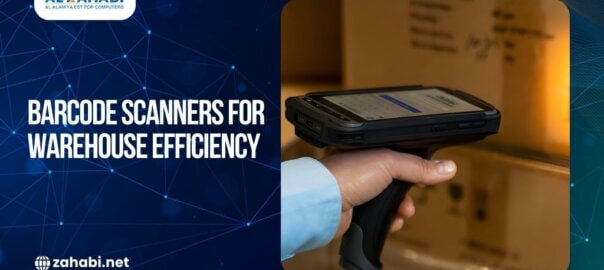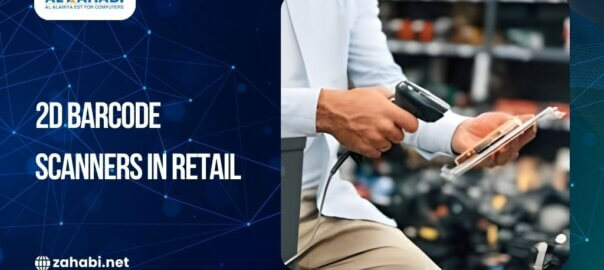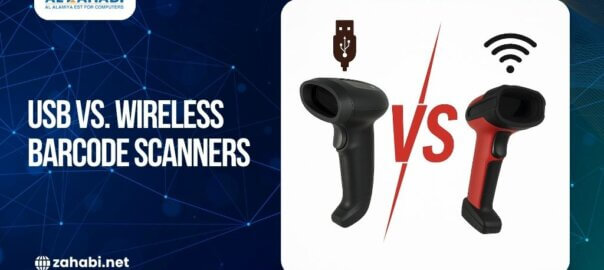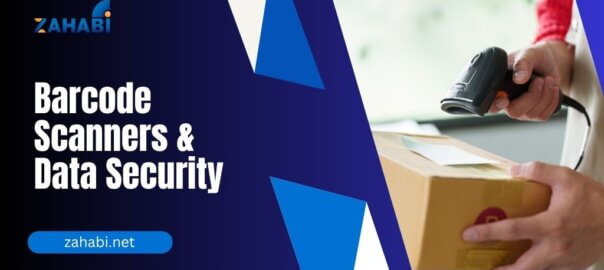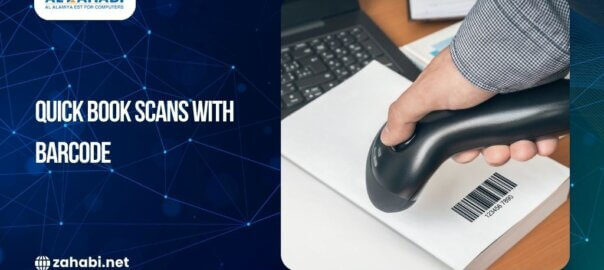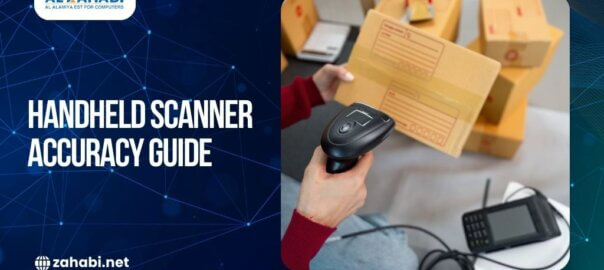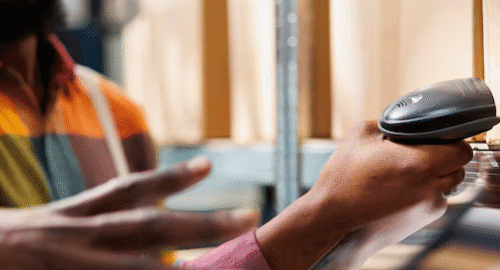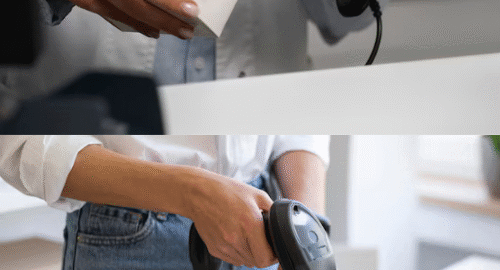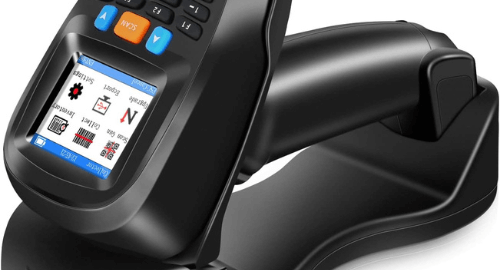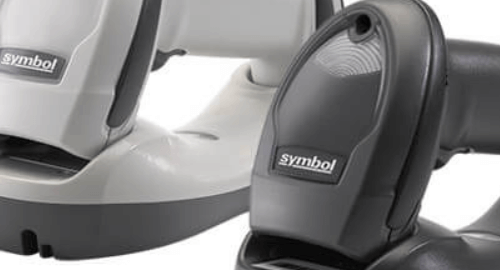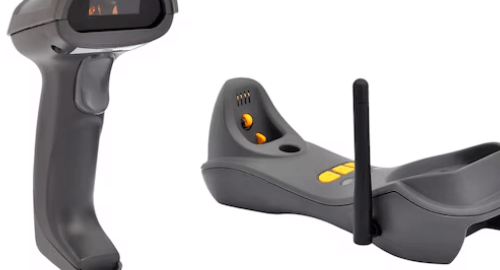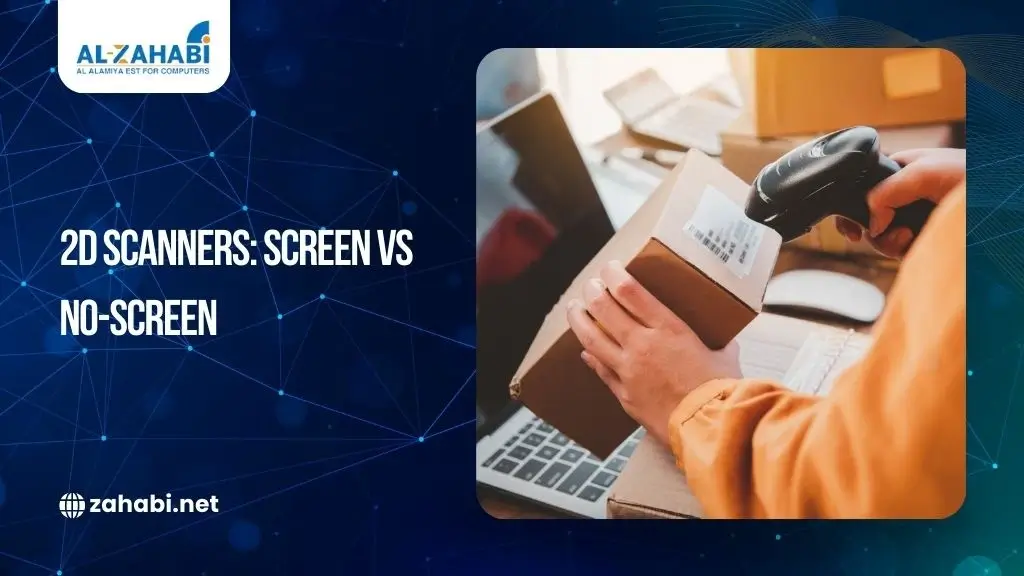
When choosing between a screen-enabled 2D barcode scanner and one without a screen, it comes down to your operation. Screen-enabled scanners give instant feedback, improved data visibility, and are suited for sophisticated operations such as logistics and healthcare. Scan-it-now scanners, on the other hand, are easier, quicker for high-volume retail, and less expensive. Zahabi offers both types, allowing businesses to find the right scanner to suit their operational requirements.
As per a market report, the worldwide barcode scanner market is expected to be worth $13.60 billion by 2030, fueled by the development of retail automation and supply chain optimization (Grand View Research, 2024). Knowledge of the variance among models guarantees organizations spend their money on the most effective technology.
What Is a 2D Barcode Scanner?
In contrast to 1D scanners, which can read linear codes alone, 2D barcode scanners are able to read QR code, Data Matrix, and PDF417 barcodes. These codes contain far more information, and as such are used in sectors such as logistics, medicine, and ticketing (GS1, 2023).
- With Screen: Prints scanned data immediately, sometimes including error reporting and user prompts.
- Without Screen: Sends information straight to an attached device without feedback on the scanner itself.
Benefits of Screen Scanners
- Real-Time Data Validation: The screen ensures the right barcode has been read. In the health sector, it lowers patient record errors (Scanbot SDK, 2025).
- Capability to Multi-Task: New models show multiple fields like product ID, expiration date, and quantity. This enhances inventory management and warehouse logistics.
- Error Minimization: With inbuilt reminders, operators correct errors on the spot, saving time and minimizing expensive mis-shipments.
- Ease of Training: New employees have fewer difficulties in learning scanning tasks as they get immediate feedback on the screen.
Check out this simple guide on how to use a 2D barcode scanner that walks you through step by step.
Benefits of Scanners Without Screens
- Speed and Efficiency: Retail checkout counters are enhanced by screen-less scanners because operators scan hundreds of items in an hour. No instant screen feedback is required.
- Lower Cost: Without built-in displays, such models are inexpensive. This is the best for low-resource small businesses or libraries.
- Durability: Less functionality equals less number of parts that can be broken. Tougher models are ideal for high-traffic locations such as supermarkets.
- Simplicity: They connect directly to POS systems or library management systems, keeping the process straightforward.
Difference Between With- Screen And Without Screen Scanners
| Feature | With Screen Scanner | Without Screen Scanner |
| Feedback | Instant display of scanned data | No on-device display |
| Error Checking | Alerts users to duplicate or incorrect scans | Errors only appear in host system |
| Portability | Slightly heavier, but versatile | Lightweight, faster for repetitive tasks |
| Training Requirement | Minimal—visual feedback helps new users | Requires familiarity with system workflow |
| Cost | Higher due to advanced display integration | More affordable for large-scale use |
| Best Use Case | Healthcare, logistics, asset tracking | Retail, libraries, event ticketing |
Use Cases for Each Type
- With Screen Scanners
- Hospitals: Patient wristbands, medication tracking, and medical equipment inventory.
- Warehouses: Confirm product IDs before shipment.
- Pharmaceuticals: Scan and verify batch numbers to comply with safety regulations
- Without Screen Scanners
- Retail Stores: Fast checkout counters.
- Libraries: Quick book check-in and check-out.
- Event Venues: Ticket validation at entry points.
Zahabi’s Role in Providing Reliable 2D Barcode Scanners
Zahabi provides with-screen as well as without-screen barcode scanners, allowing companies to choose models depending on their needs:
- Durability: Built to withstand the rigors of daily extensive use.
- Compatibility: Supports POS, inventory, and library management systems.
- Affordability: Versions available for small enterprises and large-scale operations.
- Future-Ready: Most models support integration with mobile devices and cloud applications.
Zahabi scanners are already in operation in retail chains, hospitals, and government offices in the Middle East and Asia.
How to Select the Proper Scanner for Your Requirements
- Examine Your Field
- Retail → Without screen for speed.
- Healthcare/Logistics → With screen for error-free verification.
- Look into Budget
If budget is a significant consideration, a non-screen scanner would work for regular scanning activities.
- Consider Workload
For organizations dealing with sensitive information or advanced processes, screen-based scanners provide superior monitoring.
- Consider Future Requirements
Scalability is important. If your operations are likely to scale, it’s worth investing in screen scanners and software integrations.
Learn more about whether a wired or wireless barcode scanner is the right choice for your business.
Future of 2D Barcode Scanners
The future is toward multi-modal scanners that integrate barcode, RFID, and biometric authentication. (Gartner, 2024) predicts that 50% of warehouses will implement dual-technology scanners by 2027.
Conclusion
Deciding between a 2D barcode scanner with a screen and one without a screen is business priorities-driven. If speed, ease, and affordability are paramount, a scanner without a screen is the sensible option. But for sectors where accuracy, conformity, and checking of data are essential, such as healthcare, logistics, and pharmaceuticals, a screen-enabled scanner provides long-term value.
Zahabi provides a wide range of reliable, robust, and future-proof barcode scanning solutions, allowing organizations to become operationally efficient while looking forward to tomorrow’s digital tests.
FAQs
Q1. Are with-screen scanners more suitable for small businesses?
Without-screen scanners are generally preferable since they are affordable, quick, and easy to use.
Q2. Do Zahabhi scanners enable QR code reading?
Yes. Zahabhi 2D scanners read QR codes, Data Matrix, and other advanced barcode types.
Q3. Are with-screen scanners more difficult to maintain?
No. Although they contain more parts, Zahabhi models come with robust displays that can support day-in-day-out use.
Q4. Can screen-based barcode scanners be integrated into inventory software?
Yes. They come in most models designed for direct integration with warehouse management or ERP software.
Q5. Is the added expense of screen-based scanners warranted?
For companies where mistakes are likely to incur financial or safety risk, the expenditure is worth it due to the high level of error reduction.

